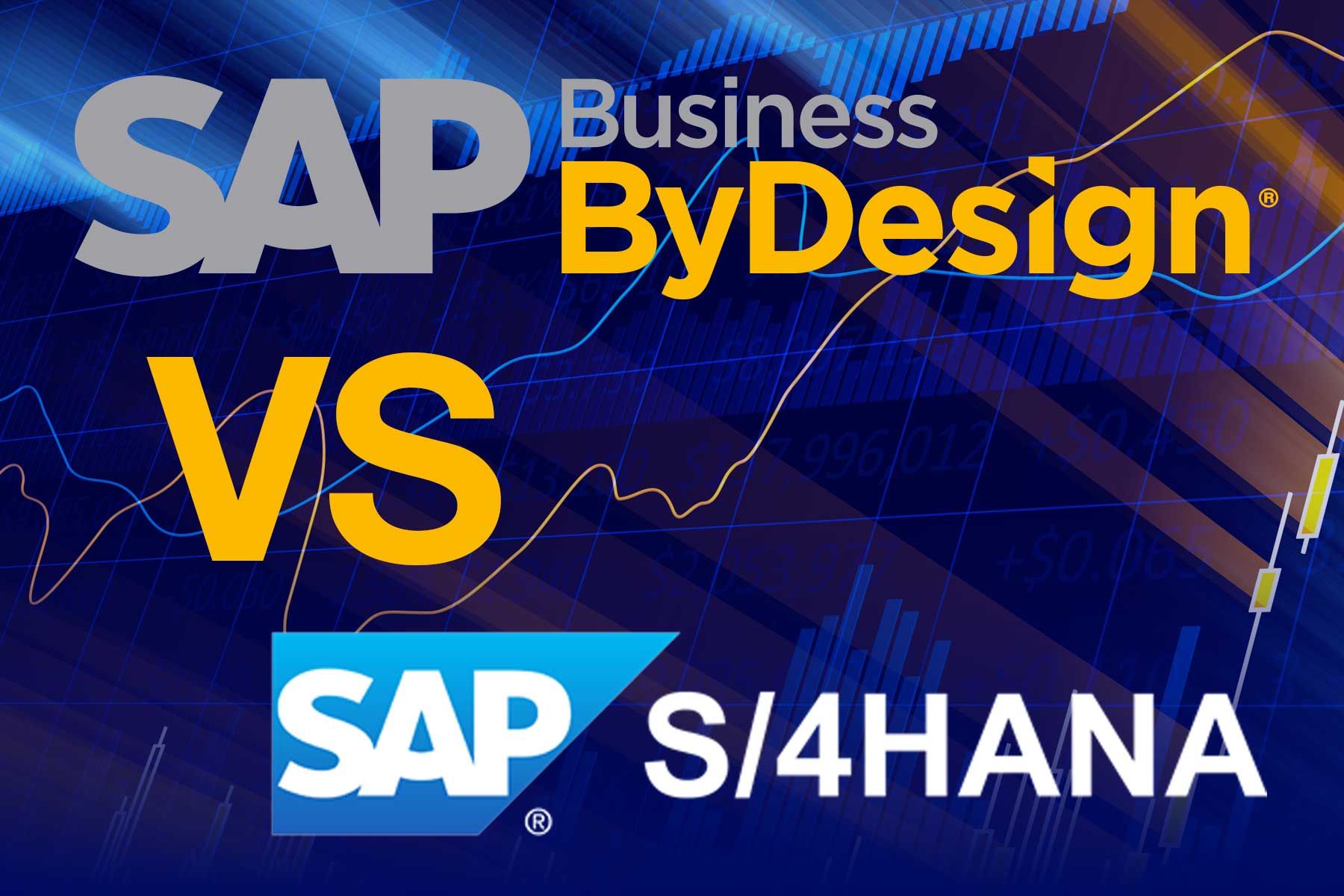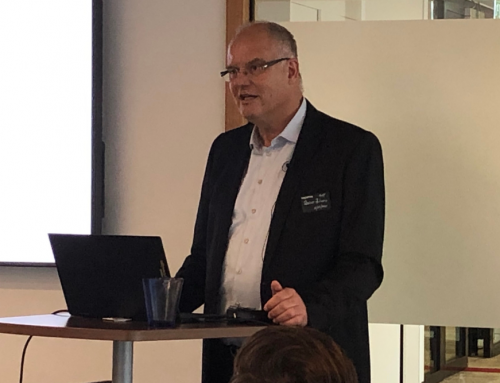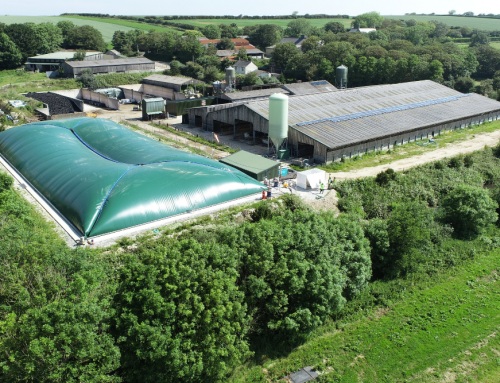SAP S/4HANA v SAP Business ByDesign – What is the Difference?
Introduction – About InCloud Solutions
InCloud Solutions is a thriving, dynamic SAP partner which has, since 2012, carried out over 40 SAP Business ByDesign implementations and over 100 SAP Business ByDesign customer solution changes. We are proud to be one of the only true SAP cloud-based Enterprise Management specialists with the largest number of SAP Business ByDesign experts in the UK.
With a career in SAP behind me I am often asked to share my detailed knowledge of the company’s solutions and their history. Here is my guide to how the HANA in-memory platform came about and the differences between SAP Business ByDesign and SAP S/4HANA.
Bob Atkinson, Managing Director
SAP and the Cloud
SAP is a global IT leader and ERP solution specialist which runs the vast majority of Fortune 500 businesses and has done for 40 years. But until recently, the chief issue facing SAP was how to help companies make the strategic move onto ‘the Cloud’, where many benefits awaited – from greater flexibility to faster analytics.
It was from this quest for a cloud solution that SAP S/4HANA was born – note that it was not named R4 which might have been logical in the wake of its iconic predecessors R2 and R3 – but this was something different and deserved a new name. For those who are curious, the ‘S’ stands for ‘Simple’, 4 is the iteration and the HANA refers to the High Analytical database designed by SAP. Based on solid state memory the architecture means that reporting was for the first time truly ‘live’ – real time reporting and analytics had arrived.
Enter HANA
So, considering what a departure this was – how did SAP go about creating something on the scale of SAP S/4HANA from the ground up and on totally unproven technology? To find out we have to spin back to 2008, when SAP made a very important decision – to purchase the core cloud technology which would make cloud ERP possible – this just happened to be the very same technology which would form the basis of another SAP superstar product – SAP Business ByDesign – an ERP truly born in the cloud.
As we write, this mid-market marvel has just completed its 4th reincarnation, which saw a move onto the Fiori based HTML5 format from the slower Microsoft Silverlight platform. And yes, SAP really do re-write the fundamental tables and process code each time to resolve know technical issues along with critical process changes to accelerate background speed for an overall quicker response.
HANA is the fundamental starting block, the core power if you like, that allowed both SAP Business ByDesign and SAP S/4HANA to come into being – so let’s delve a little further into HANA’s history in order to understand it’s future as the backbone database for SAP’s cloud ERP offerings.
Core Principles Explained
SAP co-founder Hasso Plattner named HANA for the Highspeed ANAlytics processor he was developing in conjunction with Mannheim University. Back in 2000 they had performed the amazing feat of accelerating distribution/logistics processes from overnight to just one hour using the solid state processing power of their premium planning engine APO (Advanced Planner and Optimiser). Now, as they worked on increasing speeds even further, they had an idea – instead of just increasing the cache and RAM of the processors as a way of speeding things up, why not extend this type of memory to the full database?
It had already been recognised that delays in the standard Oracle based databases were being caused by the database code itself, which acted like a pseudo warehouse manager – running off to fetch the required information out of storage when asked. This was a laborious process as the information then had to be written onto Hard Disk Drives (HDD), and reports had to be created overnight based on information which was already 24 hours old (Business Intelligence products); the new HANA processor was capable of doing the same thing in seconds, and with that, real time-live reporting was born.
We now take this sort of technology for granted but it was and remains, revolutionary in mainstream business software.
Savings in the Cloud
SAP S/4HANA signalled a move away from a transactional system that recorded data and passed it to a BI tool to analyse the following day, toward giving end users active support in providing information for decision-making in real time – AND it was in the Cloud. One of the most immediate benefits of this was cost – no more hardware partners to negotiate, nor internal IT support staff managing backups, data migration to BI tools, and general systems maintenance – all gone, SAP handle all of these disciplines and wrap them up into an annual license fee.
We often get asked how SAP is able to keep the costs for Cloud so low (and this is true of both SAP Business ByDesign and SAP S/4HANA) compared with on-premise solutions – and it comes down to economies of scale. One Server can have up to 10 different Tenants (customer systems) within it, with securely partitioned memory, yet they use the same processors and associated server hardware – so there is total security for each customer but they are able to benefit from sharing the same physical space. It is commonly known that the heart of the computer is its processor/s and during quiet periods, especially overnight, these processors may be idling, so why not put them to good use and have their processing time utilised across multiple businesses? With security running at Tier 4, which is military grade (retina scanning, oxygen free environments etc) the security on offer to keep your data safe is far beyond the capacity of most businesses.
Automatic Updates for All
Another benefit of the SAP cloud portfolio is that updates are offered automatically to all Tenants. This is a big advantage as it minimises any legal process changes for the end users (e.g. you get automatic updates for IFRS16, GDPR etc) which would normally represent a huge headache for IT staff looking after on-premise systems. How does it work? Customer test systems are upgraded first to check everything is OK, and then 2-3 weeks later, the productive systems upgrade automatically, the customer may not even realise this has happened, it’s become so slick! The exception is that the flagship SAP S/4HANA Private Cloud Edition could be kept on a specific version for up to 5 years under certain circumstances, to be discussed directly with SAP, but a very large upgrade at the end of this period would be necessary!
What is the difference between SAP Business ByDesign & SAP S/4HANA
So, now you know the background, what actually are the differences between SAP S/4HANA and SAP Business ByDesign? At first they both appear very similar – but in practice, the truth is they are very different. The illusion comes from the fact that they share the same front-end display – ‘Fiori’ – which simply means ‘Flowers’ in Italian. It is coded in HTML5 which means it is super quick to display, even when information is being accessed from across the globe. In fact, all SAP products will eventually get the same Fiori treatment, so everything will look very similar – you may even end up with multiple solutions populating the same screen without even knowing – but it will save you time hopping between systems as you go about your daily role!
SAP Business ByDesign – Your Flexible Friend
The big difference between the two is in the architecture of each product. SAP Business ByDesign is written with tools that utilise C#, .net, and Visual Basic to name a few, and by doing this SAP have created an application that is easily manipulated. It is possible to automate standard tasks or make minor changes in the system as necessary using a simple tool. This tool is called the Cloud Application Studio, (CAS), and offers end users, (but primarily SAP partners,) the ability to change standardised core business processes such as Purchase to Pay (P2P), or Order to Cash (O2C) and amend them to suit the exact business requirements of the business implementing the solution. 80% of businesses say they want ‘vanilla’ processes, but in practice, it is the other way around! When 80% of businesses want to alter the standard processes to fit their business, it certainly helps to have that flexibility built in.
SAP S/4HANA – The Volume Handler
You might assume that SAP S/4HANA is simply a souped up version of SAP Business ByDesign? Throw more computing power into the mix and off you go? But it doesn’t work like that. While the way SAP Business ByDesign is coded may be very rapid to deploy and manipulate when necessary, the code actually puts An ultimate limit on the volumes of data the solution can handle. SAP Business ByDesign is a fully auditable solution – data can’t be deleted from it, so a full record of every possible transaction can be viewed at any time. Eventually – over many years – the database will fill up – so it won’t suit everyone, certainly not vast enterprises looking to run huge numbers of transactions daily – but please rest assured that this is not the case with most companies. The limit is set very high at 1000 users, and SAP Business ByDesign can and does handle millions of transactions annually, which is more than enough for the $1Bn businesses who use SAP Business ByDesign very happily on a daily basis!
Private Tenant?
Some people ask – What if we convert to become our very own Private Tenant on SAP Business ByDesign? Would it be even quicker?
The Private tenant idea, on the surface, may be a little misleading. Essentially, what you get are ten of your own SAP Business ByDesign Tenants, and no other business having access to your hardware, Servers, etc. The advantage being able to control your own destiny when it comes to mass uploads, major MRP runs etc, so as to schedule these common, less critical processes when the active users are working during the day, basically doing your own load balancing on the processors you have at your disposal. Is it any faster? Not really, maybe 10-15% quicker, but certainly not doubled in speed which was a common misconception in the early days.
Large Volumes
The appeal of SAP S/4HANA Cloud is that the coding is in the form of the native SAP Advanced Business Application Programming (ABAP), which brilliantly handles the colossal volumes that SAP are renowned for. This makes it a clear-cut decision when you are looking for those kinds of volumes. SAP Business ByDesign was simply not designed for that, but as a rule of thumb when writing this, 1 million end to end processes per annum is about its limit, which includes multiple transactions in each process, so it’s process complexity dependant (Sales Orders, Purchase Orders, Project volumes etc), so still no slouch, but it is in bulk volume where SAP S/4HANA starts to stretch its legs, making the two solution great stablemates within the SAP Cloud Portfolio.
Pricing Models
This leads on to the pricing models for the two solutions. SAP Business ByDesign is the same user price no matter how much you use the tenant from a data point of view. Within the Private edition, you will get 10 tenants and a minimum of 20 users per tenant, so you really need 200+ users to be thinking of this route, but for either flavour, you pay for the user licenses and forget about the cost of the hardware, maintenance and security. SAP S/4HANA is significantly different; as it’s ‘technically’ unlimited in capacity, SAP bring in on top of user licenses (of which there is a minimum of 120 users), a pay as you use volume hierarchy, currently in blocks of 135,000 transactions, whether it be Purchase orders or Sales Orders, so as you see, the bigger clients start paying for the privilege of somebody else looking after their hardware and security! In reality though, the Cloud version of SAP S/4HANA is still incredible value to the customer compared with the equivalent On-Premise solution.
Take a look at our cost calculator here.
Does Age Matter?
When it comes to the maturity of the two solutions, you should take into consideration how long they’ve been around. SAP Business ByDesign has just had its 10th birthday, SAP S/4 HANA is barely 4 years old. This shows in the complexity of the two solutions, SAP Business ByDesign is far richer across both Financials and Supply Chain (including manufacturing) capability, with another rewrite of Manufacturing on its way for 2020. SAP S/4HANA will always be behind the pace of SAP Business ByDesign because SAP developers get key principles working rapidly in Business ByDesign first, before transferring this knowledge to the S/4HANA solution. S/4HANA takes far longer to program, and still doesn’t have the flexibility – at the moment – for critical changes to be made for individual customers, although the core scoping is still very strong for a standard product.
Concluding thoughts
In conclusion, both products seem very similar, but in reality they are very different! It shouldn’t be assumed that because something is bigger and more expensive that it is always the best. As ever, the best advice is to be very clear about what you require from the outset – at this point you may find that the little brother is more than adequate for your needs and is actually a better fit for your situation – surprising but true! And if you feel that global domination is your thing, upgrade to SAP S/4HANA when the time is right and the users won’t know much about the transition, so no extensive staff training or employee ‘hearts and minds’ concerns, it’ll be business as usual. How very Germanic!










Leave A Comment